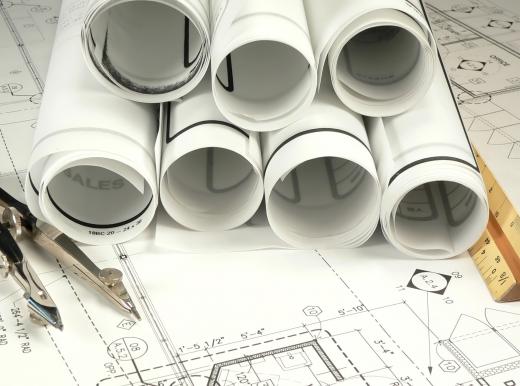A cantilever retaining wall is a form of masonry installation that holds a large amount of earth in place. The cantilever design is just one of several variations on a retaining wall design, using various principles to manage earth loads. Engineers evaluate a specific area to see which kind of retaining wall is the best choice for keeping earth loads in place.
A concrete cantilever retaining wall uses a relatively thin stem of steel-reinforced, cast-in-place, concrete or mortared masonry. In a cantilever retaining wall design, an earth pressure vector acts horizontally against the side of the wall. The bottom part of the wall presents a gravity vector downward. That gravity vector produces an opposite force upward. The resulting vector counters the earth pressure vector, and pushes back against the earth load.

The bottom element of a cantilever retaining wall is covered by the earth load. That means that a casual observer will not be able to see whether a retaining wall has a cantilever design. Blueprints or other official documents can show whether a retaining wall was installed with a cantilever design.
In most public or commercial projects, and the majority of residential projects, a cantilever retaining wall design, or other similar project, needs to be presented to local zoning officials to make sure it complements certain criteria for an area. Some of these include storm-water runoff plans and public safety codes. Professional engineers will also look at whether the retaining wall has sufficient structure to handle the lateral earth pressure mentioned above.

Another aspect that engineers evaluate in retaining wall design is the potential to moderate the effects of a landslide or avalanche. Retaining walls can be helpful in protecting soil against the kinds of movement associated with these natural disasters. Looking at landslide risk and the risk of liquefaction, the water saturation of earth, is part of assessing how a retaining wall works.

In properties of historic significance, an original stone retaining wall may benefit from being renovated into a cantilever design, or similar structure. In new housing communities, a local zoning or other government board may require a retaining wall on a property in order to satisfy concerns about the grading or changing topography of an area. Looking at various retaining wall choices helps a building company or other party to assess the overall costs of dealing with an area containing a slope or grade.
